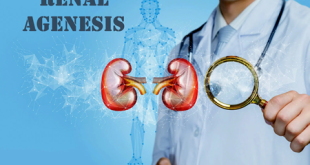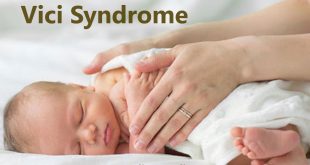Definition
Velocardiofacial syndrome, or VCFS, is a complex syndrome that has been associated with more than 30 different characteristics, including defects of the palate, heart defects, learning disabilities and distinct facial features. The severity of VCFS and the characteristics that appear vary widely among individuals. It’s inherited in an autosomal dominant fashion, meaning if one parent has the syndrome, each child has a 50 percent chance of inheriting it.
The name comes from the Latin words velum, meaning palate, cardio, meaning heart, and facies, meaning face. The condition is also known as Shprintzen syndrome, DiGeorge syndrome or 22q11 Deletion syndrome.
Because symptoms vary from case to case, it’s important for children with VCFS to be evaluated by a knowledgeable team of specialists so nothing is overlooked.
Velocardiofacial syndrome
Epidemiology
Estimates of the incidence of 22q11.2DS (DiGeorge syndrome, DGS) range from 1 per 2000 to 1 per 4000 persons in the general population of the United States, as well as internationally. It is a frequent cause of cleft palate and congenital heart defects. Although 22q11.2DS is a congenital condition, the age at diagnosis largely depends on its severity and on the types of birth defects it causes. Thus, patients with more serious cardiac defects or hypocalcemia are diagnosed in the neonatal period. Recurrent infections usually present in patients older than 3-6 months.
Pathophysiology
- The critical chromosomal region involves a large portion of the long arm of chromosome 22.
- The region contains 30-40 genes, all of which appear to have regulatory functions.
- These genes are responsible for DNA-binding proteins and a variety of regulatory functions that affect cell differentiation and migration.
- These genes appear to have a specific effect on branchial arches 2 through 4, which are regions predetermined for craniofacial development, heart structure differentiation, and thymus development.
- These genes also affect central nervous system development in that learning difficulties are common.
Risk factors
Genetics
- Associated hemizygous microdeletion of 22q11.2
- Up to 10% of newly diagnosed cases are inherited.
- 50% recurrence risk at each pregnancy for affected individuals
Causes
- Velocardiofacial syndrome is a condition that is either inherited or occurs spontaneously as an autosomal dominant genetic mutation. Specifically, in children with VCFS, a segment of the long arm of chromosome 22 is absent.
- VCFS does not occur because of anything the mother did or did not do during pregnancy.
- In fact, the particular reasoning for this genetic deletion is not completely understood and seems to occur, as mentioned, most often as a new mutation in the child (93%), with neither parent having the deletion.
Genetic factor causes
Symptoms
Children with VCFS can have a wide range of signs and symptoms, with differing degrees of severity. Some babies show signs of the condition at birth and others are diagnosed in the first few years of life.
Common symptoms include:
- speech difficulties
- middle ear infections or hearing loss
- vision problems
- feeding problems
- frequent infections
- learning disorders, especially with visual materials
- developmental delays
- communication and social interaction problems
Facial features may include:
- Small ears with squared upper ear
- Hooded eyelids
- Cleft lip and/or palate
- Asymmetric facial appearance when crying
- Small mouth, chin and side areas of the nose tip
Cleft lip
Complications of velocardiofacial syndrome
Complications include the following:
- Congestive heart failure
- Pulmonary hypertension
- Immune deficiency (cellular and humoral) with the increased risk of infection and autoimmune diseases
- Psychiatric disorders
Diagnosis
- A conclusion of DiGeorge syndrome is made mainly on the findings of a lab test which detects the “deletion in chromosome 22”. The physician will order this test as well as a grouping of other medical tests.
- Since some heart deficiencies are usually linked with DiGeorge syndrome, merely the occurrence of this defect is apt to have the physician to order the lab test for a “chromosome 22 deletion”.
Treatment of velocardiofacial syndrome
There is not any cure for this syndrome. Therapy may normally correct any problems that are critical such as the defect in the heart or calcium levels that are too low. Medical care for mental health, as well as developmental or behavior difficulties, are where the real challenge lies and the conclusions are unpredictable.
Therapy and treatments for an individual with this syndrome can include intercessions for the below-listed conditions:
Hypoparathyroidism
This condition can normally be treated by calcium supplements, low-phosphorus diet as well as supplements of vitamin D. If sufficient amount of parathyroid tissue is undamaged, it is probable that the child’s parathyroid gland will usually begin the regulation of phosphorus and calcium levels without needing a special diet.
Thymus gland function that is limited
If the individual has selected thymic functioning, infections will probably be recurrent but not automatically severe. These illnesses – normally frequent ear infections as well as colds – are treated as with any other normal child. The majority of children with the thymic function that is limited will still need to follow the approved schedule for vaccines. With these children, the immunity system functioning will get better as the child grows older.
Thymus dysfunction that is severe
If thymus dysfunction is severe or if there is no thymus, the child is susceptible to all type of infections. Treatment for this requires a thymus tissue transplant, cells that are taken from bone marrow or disease-fighting blood cells that are specialized.
Defects of the heart
Most with this syndrome need surgery to mend as well as correct circulation of blood.
Cleft palate
This as well as other abnormalities of the palate are able to be repaired surgically.
Development overall
The child will profit from a wide variety of therapies, from occupational therapy to speech therapy as well as developmental therapy. In the US, most early intervention therapy programs offer all kinds of therapy and are normally obtainable thru any state’s health department.
Care of mental health
Medication for mental health can be advised if the child is at some time identified with hyperactivity disorder/attention-deficit, schizophrenia, depression or other mental health disorders.
Prevention of velocardiofacial syndrome
In some cases, DiGeorge syndrome (22q11.2 deletion syndrome) may be passed from an affected parent to a child. If you’re concerned about a family history of 22q11.2 deletion syndrome, or if you already have a child with the syndrome, you may want to consult a doctor who specializes in genetic disorders (geneticist) or a genetic counselor for help in planning future pregnancies.
 Diseases Treatments Dictionary This is complete solution to read all diseases treatments Which covers Prevention, Causes, Symptoms, Medical Terms, Drugs, Prescription, Natural Remedies with cures and Treatments. Most of the common diseases were listed in names, split with categories.
Diseases Treatments Dictionary This is complete solution to read all diseases treatments Which covers Prevention, Causes, Symptoms, Medical Terms, Drugs, Prescription, Natural Remedies with cures and Treatments. Most of the common diseases were listed in names, split with categories.








so serious syndrome, thanks for knowing